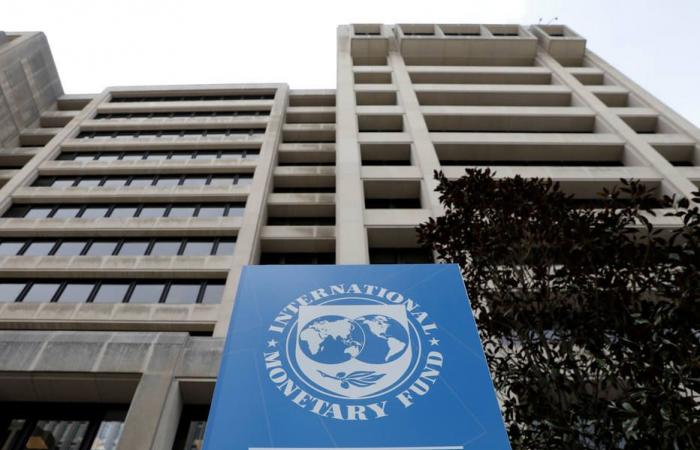NEW YORK – The emergency increase in public spending adopted by the government to combat the crisis caused by the pandemic of the coronavirus should take the Brazil to register a primary deficit by 2025, when it will reach a negative result of 0.1% of the Gross Domestic Product (GDP), point to statistics from International Monetary Fund (IMF) in the Fiscal Monitor document.
According to the Fund, the primary deficit – which is the result between government spending and its revenue, without taking into account public debt interest expenses – should jump from a negative result, as a proportion of GDP, to 1 % in 2019 to 12% in 2020. In April, the IMF estimated that the primary deficit this year would reach 5.2% of GDP.
Until 2013, Brazil had been accumulating primary surpluses – that is, it spent less than it collected. These results were important to reduce public debt and to show investors that the country had its accounts under control. As a result, Brazil received the investment grade seal from the risk rating agencies.
As of 2014, this sign was reversed, showing a picture of uncontrolled spending, and the country ended up losing the seal of good payer, which drives away foreign investments. If the IMF’s projections are correct, the government will accumulate a sequence of 12 years with expenditures greater than expenditures.
According to the Fund, with the improvement of the economic scenario next year, given that the GDP should go from a 5.8% drop in 2020 to a 2.8% growth in 2021, there will be a reduction in public spending, but even thus a high level of expenditure will be recorded. The primary deficit is projected to reach 3.1% of GDP in 2021. The deficit, in proportion to GDP, will fall to 2.0% the following year, will reach 1.3% in 2023 and reach 0.6% in 2024.
In this context of rising official spending, the nominal deficit – which also takes into account the payment of debt interest – will increase from 6% of GDP in 2019 to 16.8% this year, well above the 9.3% estimated in April by the Fund for 2020. In 2021, the indicator is expected to decline, but will still reach 6.5% of GDP, a level slightly higher than the previous forecast of 6.1%.
The IMF estimates that the negative result of public accounts, as a proportion of GDP, should decline to 5.6% in 2022, continue at 5.6% in 2023, rise to 5.9% in 2024 and remain stable at 5.9 % next year.
In the projections for 2020, the Fund considered the public deficit target foreseen in the federal budget. “Medium-term forecasts assume compliance with the constitutional spending ceiling.”
Debt
Gross debt, also as a proportion of GDP, which reached 89.5% in 2019, is expected to exceed 100% this year, when it will reach 101.4%. The expectation is for growth until 2025. In April, the Fund predicted that the indicator would reach 98.2% in 2020.
For 2021, this government liability is expected to rise to 102.8%, above the 98.2% previously forecast. In 2022, gross debt should reach 103.5%, increase to 103.8% in 2023, rise the following year to 104.2% and reach 104.4% in 2025.
In the same way, the net public debt should have a trajectory of frank rise in the same time horizon. The IMF projects that the indicator will reach, as a proportion of GDP, 68.5% this year, a mark higher than the 62.8% previously forecast. In 2021, the number will increase to 74.0%, above the 64.9% estimated by the multilateral institution in April. For 2022, net debt is expected to reach 76.9%, rise to 79.1% in 2023, reach 81.2% in 2024 and reach 82.8% in 2025.
The IMF has again released fiscal data for a six-year period. Longer forecasts had been suspended in April due to the extraordinary impact of the coronavirus pandemic on the economy, which caused the worst global recession after the Great Depression.
The Fund did not report projections for the nominal interest rate for Brazil. In another document, World Economic Outlook, the Fund estimates that the IPCA will end this year at 2% and rise 2.9% in 2021. Furthermore, it also points out that current transactions will register a surplus of 0.3% of GDP in 2020, but the indicator will be stable next year and will reach a deficit of 0.7% of GDP in 2025.
These were the details of the news IMF estimates that Brazil will have a gap in public accounts... for this day. We hope that we have succeeded by giving you the full details and information. To follow all our news, you can subscribe to the alerts system or to one of our different systems to provide you with all that is new.
It is also worth noting that the original news has been published and is available at time24.news and the editorial team at AlKhaleej Today has confirmed it and it has been modified, and it may have been completely transferred or quoted from it and you can read and follow this news from its main source.

